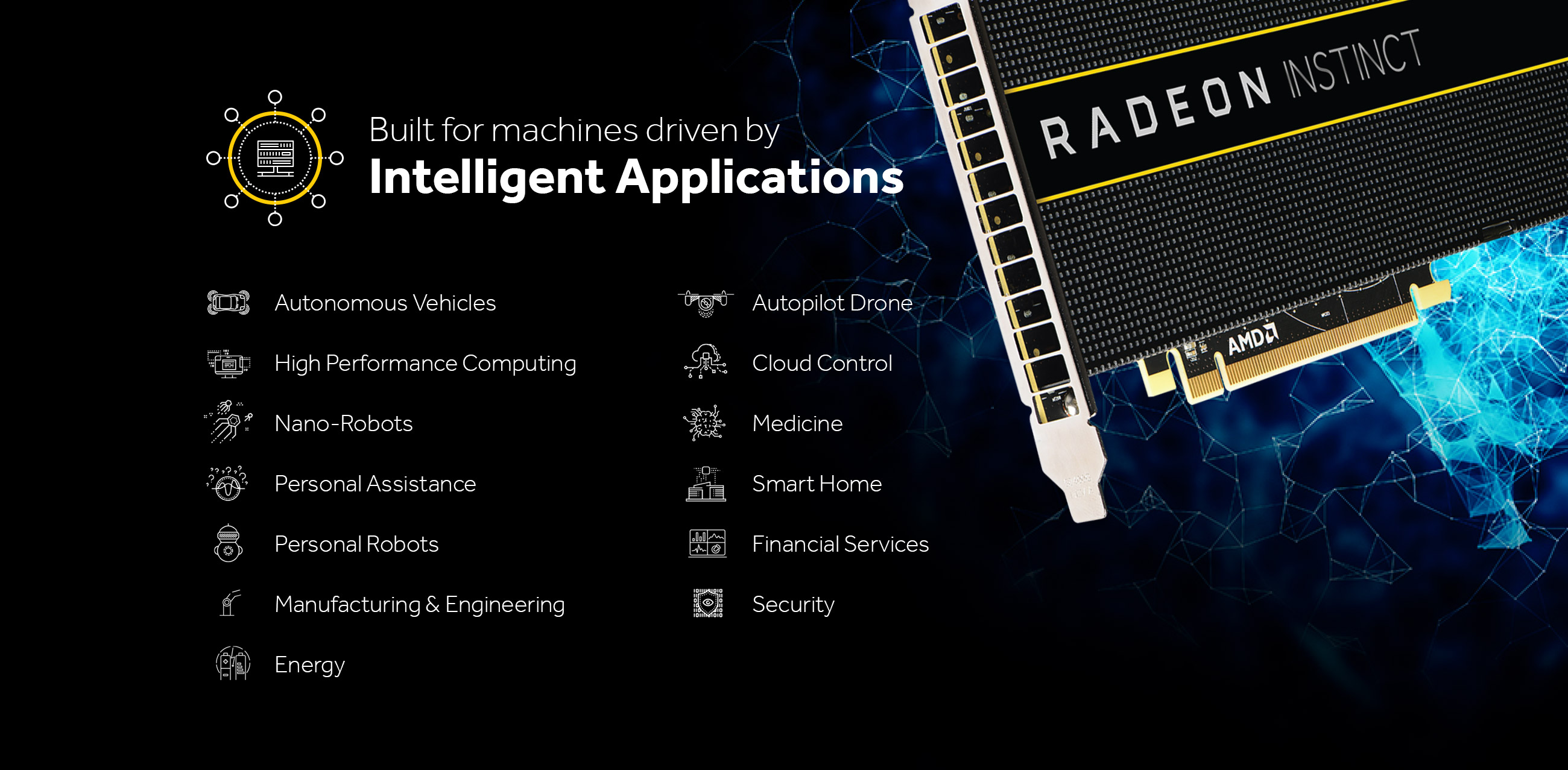 EMERGING TECH
EMERGING TECH
 EMERGING TECH
EMERGING TECH
 EMERGING TECH
EMERGING TECH
When it comes to high-end computer graphics, Nvidia Corp. and Advanced Micro Devices Inc. have been the Coke and Pepsi of the industry for more than a decade, though the gap between the two has widened in recent years thanks in part to Nvidia’s rapid expansion into machine learning.
Now AMD is trying to play catch-up with the unveiling of its new Radeon Instinct GPU line, which is specifically aimed at deep learning inference and training. Deep learning neural networks are aimed at roughly emulating the way the brain learns.
Although AMD said it will continue to be heavily focused on consumer graphics, the company notes that machine learning is an important part of its roadmap over the next five to 10 years. According to AMD Chief Executive Lisa Su, this long-term plan will put AMD at the forefront of machine learning.
“Radeon Instinct is set to dramatically advance the pace of machine intelligence through an approach built on high-performance GPU accelerators, and free, open-source software in MIOpen and ROCm,” Su said in a statement. “With the combination of our high-performance compute and graphics capabilities and the strength of our multi-generational roadmap, we are the only company with the GPU and x86 silicon expertise to address the broad needs of the datacenter and help advance the proliferation of machine intelligence.”
As for the technical details, the new Radeon Instinct line will initially include three GPUs with a range of hardware specifications and use cases. The entry level MI6 accelerator, which is based on AMD’s Polaris chip architecture, is aimed at balancing power and efficiency, supporting compute speeds of up to 5.7 teraflops on just 150 watts of board power. Meanwhile, the more powerful MI8 accelerator uses AMD’s Fiji nano GPU, with a small HPC form factor that offers 8.2 teraflops for 175 watts of board power.
AMD designed these first first two cards to be inference accelerators, but the company’s flagship MI25 accelerator is specifically designed for deep learning training with optimization for time-to-solution. The MI25 will take advantage of AMD’s next-generation Vega GPU architecture, which will hit the market sometime in the first half of 2017, and it has a significantly higher power requirement than the other cards at up to 300 watts.
AMD’s new GPU line will take advantage of a number of open source machine learning solutions, including the upcoming MIOpen GPU-accelerated library and the ROCm deep learning frameworks. The company said it’s also collaborating with other companies to develop new data input/output standards that will support a wide range of server CPU architectures, including X86, OpenPOWER and ARM AArch64.
The first Radeon Instinct GPUs will ship in the first half of 2017. You can watch AMD’s rather overwrought video teaser for the new GPU line here.
Support our mission to keep content open and free by engaging with theCUBE community. Join theCUBE’s Alumni Trust Network, where technology leaders connect, share intelligence and create opportunities.
Founded by tech visionaries John Furrier and Dave Vellante, SiliconANGLE Media has built a dynamic ecosystem of industry-leading digital media brands that reach 15+ million elite tech professionals. Our new proprietary theCUBE AI Video Cloud is breaking ground in audience interaction, leveraging theCUBEai.com neural network to help technology companies make data-driven decisions and stay at the forefront of industry conversations.